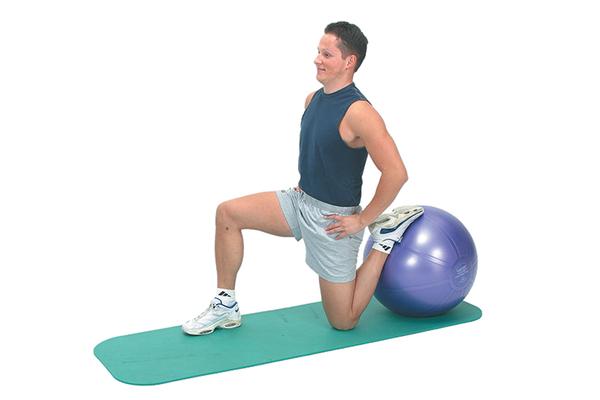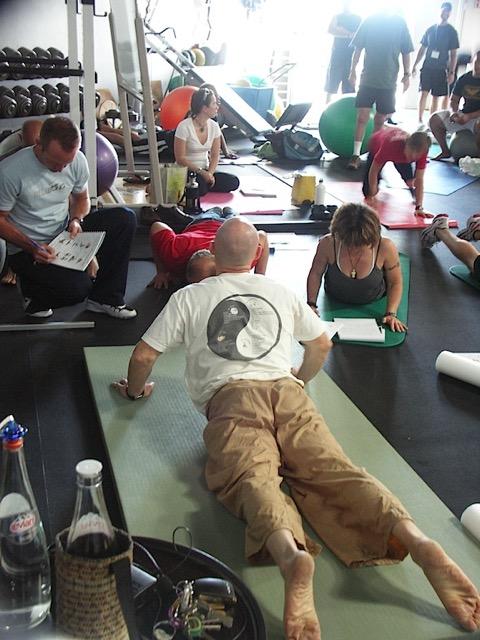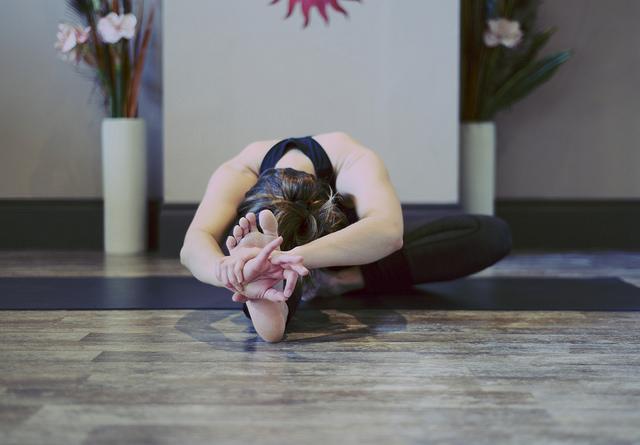Intelligent Stretching Part 2
by Paul Chek

 Did you know stretching is an ancient form of exercise that stretches across the evolution of humans and animals? If you have any doubt, carefully watch any animal and you’ll often see them stretch after resting.
Did you know stretching is an ancient form of exercise that stretches across the evolution of humans and animals? If you have any doubt, carefully watch any animal and you’ll often see them stretch after resting.
Unfortunately, when it comes to stretching, most people treat all of their muscles the very same way although muscle groups function very differently.
In part 1 of this short series, I discussed the differences between tonic and phasic muscles and why achieving better balance between those muscle groups improves your health and how your body performs in the gym and elsewhere.
In the final part, you’ll learn how long you should maintain a stretch, the most optimal time to stretch your muscles and some effective ways to stretch.
When should you stretch your muscles?
Immediately before you warm up for exercise, I suggest that you stretch only the tight muscles identified by testing (refer to part 1 for more details) or those that lack the needed flexibility related to your chosen activity.
Always test your response to such corrective stretching in a non-competitive environment for the best results because stretching tight muscles can change your sense of balance and where your limbs are in space (proprioception).
This is not an experience you want to have for the first time prior to competing!
If you lack normal or optimal flexibility in any muscle group and want to balance your body for injury prevention and/or pain reduction, stretch at night as close to bedtime as possible. Why? Your body does most of its tissue healing at night, so if you lengthen tight muscles before bed, they will heal in a lengthened state, progressively balancing your body.
However, if you want to stretch to improve energy levels (chi flow), you can experience a favorable response whenever you are tired. I prefer stretching to improve chi flow first thing in the morning because it helps me feel better in my body and improves mental clarity.
No matter when you stretch, you’ll find that your results are best if your body is warm. A skin temperature that causes a light sweat is just right.
Also, remember that tight muscles are like crying babies. If you stretch too hard, it’s like disturbing a crying baby, which makes it cry louder. Easing into the stretch is like gently rocking the baby. Your muscles will relax and let go more easily.
Never rush a stretching session. If you’re in a hurry, simply start with the tightest or most problematic muscles and do as many of them as you can as well as you can. Doing a half-assed job on a bunch of them will not produce the best results.
What’s the best way to stretch your muscles?
If you are prepping for an athletic event, I suggest a form of stretching called “contract–relax.” This method requires that you place the muscle to be stretched under tension, then activate it against isometric (immovable) resistance for five seconds followed immediately by five seconds of relaxed lengthening.
Here, you’ll quickly discover how breathing really influences your stretching. A general rule of thumb is to inhale as you activate a muscle and exhale as you relax and stretch it.
After contracting for five seconds, it’s very important that you immediately move into the stretch position as you relax and exhale. You have a very narrow window of time during which the contraction will relax the muscle, facilitating the stretch.
Each muscle you stretch with this method should be exposed to between three to five contract-relax stretch cycles. Be aware that you may need to stretch exceptionally tight muscles two to three times during these cycles.
If your muscles are chronically shortened and you need to improve your joint range of motion beyond what can be done with contract-relax stretching, or if you have shortened connective tissues, prolonged static stretching will be more effective.
Again, these stretches are best done at night with your body warm with a light sweat in a steam bath, or even in a hot tub (be careful about the time you spend in the hot tub!).
I recommend holding each stretch for a minute or more. Again, don’t be overzealous with your stretching efforts or your body will react against the stretch to protect you from injury.
You can stretch each of the shortened muscles or muscle groups at least three times, if not more. When you no longer experience a lengthening effect, you’ve maxed out your gain in that session. Don’t force it, or you may injure your connective tissues.
How long should you stick with your stretches?
As your body begins to balance with corrective stretching, you won’t feel a sense of tightness in the muscle any longer. At that point, you should not stretch it any further unless you have a specific flexibility requirement for your chosen activity.
For example, many golfers need to improve their range of motion beyond the point that they naturally reach their end range even though their body is balanced.
In such cases, corrective stretching methods should be continually applied until your flexibility goals are reached, unless that amount of flexibility is beyond your natural ability.
If your work or sports activities change, so too must your stretching routine if you want the best results! I suggest repeating all of the stretch tests outlined in How To Eat, Move and Be Healthy! every couple of weeks, remembering to adjust your stretching routine to include only those muscles that are lacking in flexibility. This will keep your body balanced and minimize unnecessary pain in joints and tissues too.
While the topic of stretching can become very complex, particularly in rehabilitative situations, if you apply the tips and read the suggested resources I’ve shared here, you will be rewarded with improved posture, better energy levels and, probably, less pain too. Even better, chances are good your performance will improve.
Stretching can be as uplifting as a cup of your favorite coffee or tea, but with none of the side effects.
If you need specific help with an evaluation, fill out the form on my website so you can find a certified C.H.E.K Institute trained professional near you.
Enjoy balance!
Love and chi,
Paul


